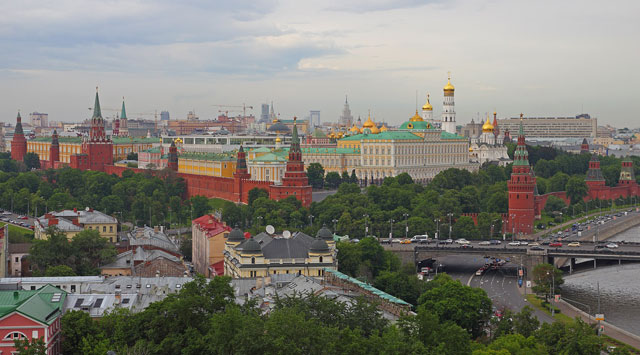The Kremlin, the past and 2020
Posted on: 6 January 2021 by James Pearce in 2021 posts

2020 was meant to be a blockbuster year for the Kremlin: twenty years of Vladimir Putin, seventy-five years since the victory over fascism in the Great Patriotic War and constitutional changes approved overwhelmingly by the population in a referendum.
Instead, the Russian state had its most difficult year for a while. Russia was badly hit by the COVID-19 epidemic as it witnessed popular protests, uprisings, deposed leaders, and war break out in the post-Soviet space. The limits of the Kremlin’s hard and soft power were noted, particularly where rhetoric surrounding the past is concerned.
History is very present in the Kremlin. Since Putin became Russia’s president, there has been an ongoing attempt to create a more patriotic history, selectively borrowing from the Imperial and Soviet past, depicting success, and promoting a cohesive national identity. This has affected all areas of Russian life, from rewritten school textbook, new monuments, memorials, and national holidays. Even last month, veterans of Stalingrad were summoned by the FSB to provide evidence on new war crime investigations.
Since the Colour Revolutions 2003-05, Russia has championed a shared history in its foreign policy doctrines as a way of increasing its own attractiveness. Following the annexation of Crimea, this intensified, and the past was used to give the appearance of Russia being surrounded by hostile others (an argument used by Russian leaders since Ivan the Terrible).
In 2020, this strategy has been a moot point.
In neighbouring Belarus, Russia’s closest cultural and political ally, it has been reluctant to get involved. Alyaksandr Lukashenka won what were widely believed to have been rigged elections. Ever since, Byelorussians have been protesting in the streets demanding his resignation. The European Union has recognised the exiled opposition leader the legitimate winner.
In the Caucasus, Russia’s most sensitive border, a conflict broke out in the autonomous region of Nagorno Karabakh. Although Russian guarantees Armenia’s security and shares deep cultural and historic ties, its military did not intervene. Instead, a ceasefire agreement was reached where Azerbaijan, backed by an emboldened Turkey, gained back Armenian occupied territories.
To round off, the pro-Russian candidate lost the presidential elections in Moldova. Its pro-European president-elect has already called for the removal of Russian troops from the ‘frozen conflict’ territory of Transnistria.
In fairness, the constitutional changes still went through; Putin could remain in office until 2036 and the national history is now protected by the constitution. The Victory Day parade still went ahead in June. Moreover, Russia’s economy was outperforming most of the G7 in December.
But the patriotic and shared past narratives are wearing thin at home and abroad. Unemployment has doubled and inflation is back to 2015 levels due to the pandemic. A few Russian regions are facing bankruptcy, and its people are spending most of their income on food. The (geo)political realities of the present cannot be explained away by the past.
Discover more
Read more about history research projects at Liverpool.